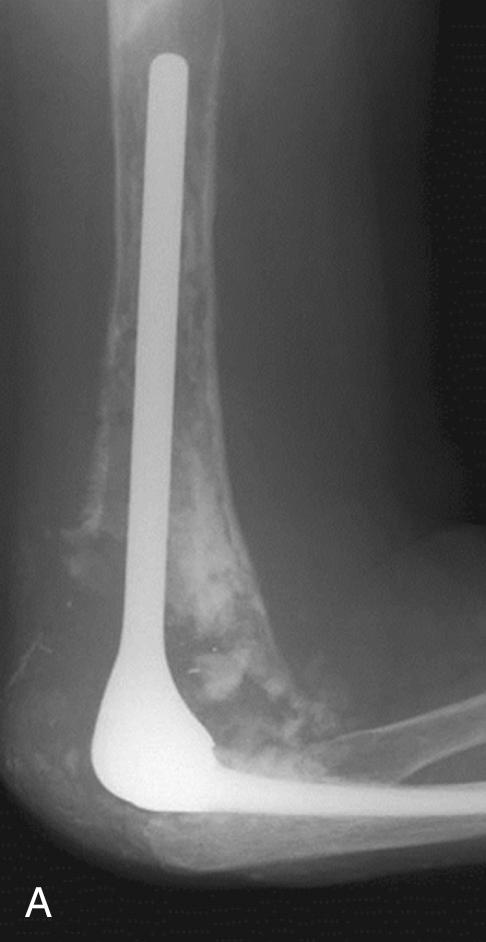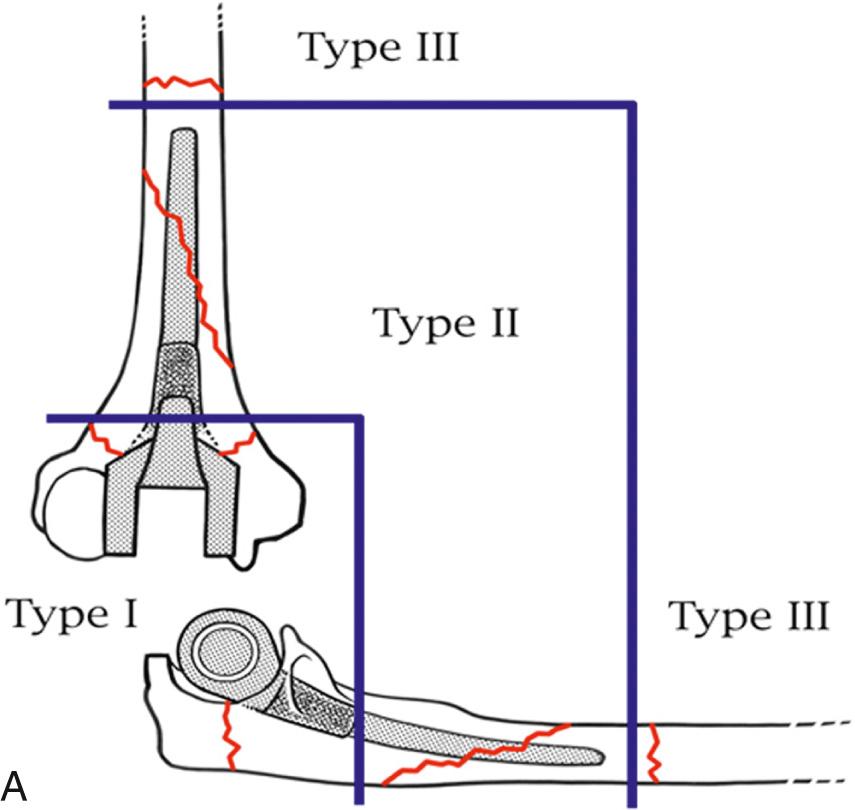Physical Address
304 North Cardinal St.
Dorchester Center, MA 02124
As discussed in Chapter 106 , the most important consideration when planning a revision procedure is the status of bone. If osseous integrity is compromised, what are the extent and nature of this feature?
Of the several expressions of osseous deficiency, a chronically loose stem produces cortical thinning and expansion for the length of the stem ( Fig. 108.1 ). If allowed to progress, this ultimately results in a type II or III periprosthetic fracture ( Fig. 108.2 ). Issues of periprosthetic fracture are covered in detail in Chapters 103 and 107 . Herein we describe impaction grafting as one of two techniques used for reimplantation in the face of osseous expansion and thinning. A type I allograft prosthetic composite (APC) option is covered in Chapter 109 . Implant selection is an important issue. We have a strong bias away from both unlinked and expensive and often inadequate custom devices in this setting.


The choice between these two options is truly down to surgeon preference. Both are effective in reality, but if one does not have access to whole bone allograft, then impaction grafting is the preferable treatment. If possible, I prefer a type I solution, primarily because it is more quickly performed, but I continue to use and to be pleased with impaction grafting.
Become a Clinical Tree membership for Full access and enjoy Unlimited articles
If you are a member. Log in here